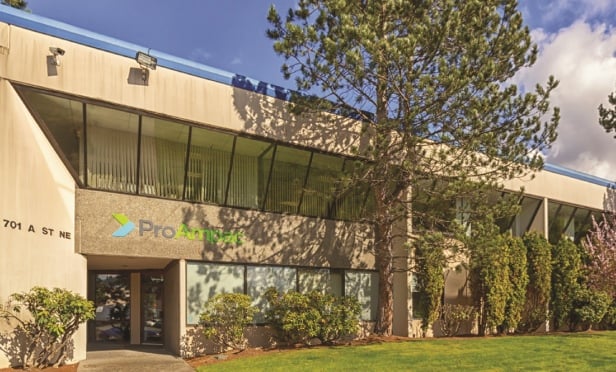MIAMI—ARA's Florida office has closed $1.04 billion in multifamily investment sales, land sales, equity capital placement, and financing so far this year—and the firm doesn't expect the pace to slow down. After closing 42 multifamily deals in 2014, the firm still has 19 deals under agreement and 20 more active marketing assignments in the pipeline.
“Multifamily investment sales remain a hot investment product due to high occupancies and strong rent growth,” says ARA founding principal Richard Donnellan. “With limited supply available, particularly in South Florida, core product continues to be highly sought after by both institutional buyers and large private groups.”
ARA Florida has eight brokerage professionals that do multifamily deals across Florida. The team has transacted more than $14.4 billion since its launched in 1995. But the multifamily landscape is changing.
“We are seeing a compression in cap rates for properties across virtually all markets in Florida as demand continues to outpace supply,” said ARA founding principal Marc deBaptiste. “Currently there is a lack of product for sale compared to 2013.”
Nevertheless, ARA principal Hampton Beebe says investment sales are strong—for now. The firm has closed over $1 billion in class A multifamily sales since 2013.
“We continue to see a very attractive interest rate environment throughout this year and should continue through the first half of 2015,” says Beebe. “We have secured several acquisition, equity commitments and construction loans for our clients that are developing new product.”
According to the Census Bureau, the US home ownership rate peaked at 69.2% in June 2004, fell to $64.8% in the first quarter of 2014. The forecast calls for home ownership to drop to 55% within a few years.
“Each 1% drop in the homeownership rate adds one million renters to the market,” says Donnellan. “In addition, the state of Florida estimates that 1,000 people are moving to Florida every day as the state continues to add jobs and retirees migrate to the sunshine.”
Multifamily development is certainly exploding in Florida. ARA principal Avery Klann says developers are scrambling to meet this pent-up demand. “However,” he added, “construction costs have been rising, making it difficult to achieve the economics needed to get projects off the boards. This will impede the pipeline going forward in 2015.”
According to ARA Florida's research, about 25,000 units are recently built or under construction with another 13,000 units planned in the South Florida metro area of Palm Beach, Broward, and Miami-Dade Counties. The combined Tampa Bay, Orlando, and Jacksonville markets are seeing 25,000 units recently completed or under construction with an additional 5,200 planned.
“Rents are above pre-recession levels and don't show signs of abating,” says Klann. “Occupancy throughout Florida remains above 95%. In addition, the condo market is strengthening and converters are back in the market, looking for multifamily product to reposition as for-sale, which will further constrain supply. This shortage is due partly to changing demographics, the fact that 60,000 rental units were converted to condominiums in the last cycle and that the recession halted development for a number of years.”
Even with significant new development in 2014, ARA principal Patrick Dufor says he expect to see a net shortfall of 25,149 units in South Florida, 9,338 units in Orlando and 942 units in Tampa compared to 2004 inventory levels. And ARA principal Kevin Judd is quick to point out value-add as another important investment play in the current market.
“Investors needing a stronger return on investment are bidding on the older deals, and adding value by updating and upgrading properties with new kitchens, baths and flooring,” Dufor says. “We have seen investors add between $5,000 and $10,000 per unit in upgrades.”
Finally, ARA principal Dick Donnellan notes there now about 80 million Millennials—which are defined as people ranging in age from 18 to 33 years old. Between 60% and 70%, he says, are more likely to rent than to buy.
“They are delaying marriage and want flexibility in where they live and work. There are also 76 million baby boomers that are living longer and having just gone through a nightmare during the last recession, are choosing to rent,” Dick Donnellan says. “These two powerful demographic forces represent 50% of the U.S. population and they are favoring renting today. This will bode well for multihousing investments for years to come.”
© Touchpoint Markets, All Rights Reserved. Request academic re-use from www.copyright.com. All other uses, submit a request to [email protected]. For more inforrmation visit Asset & Logo Licensing.






